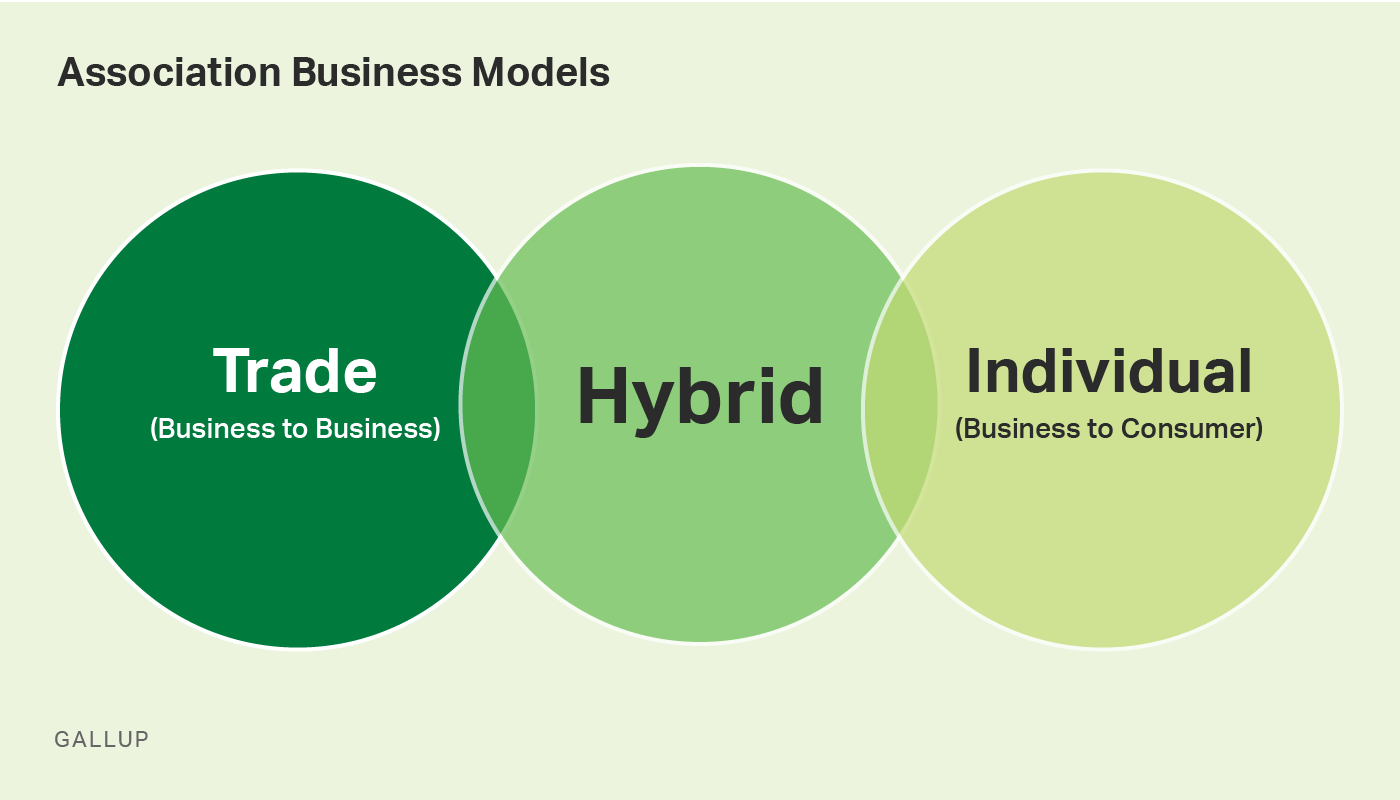Two-thirds of member-based organizations, including trade and professional associations, don't have a formal plan for engagement.
Gallup research shows that organizations with high levels of customer engagement see 63% lower customer attrition. Without an engagement plan, organizations are missing out on opportunities for growth and may even be losing their best members.
Therefore, it is critical that organizations create a plan and a formal mechanism to measure engagement.
Effective Member Engagement Programs Do This
Gallup has long been a pioneer in applied behavioral economics -- the study of why people make the decisions that they make. Traditional economics supposes that individuals make decisions solely on a rational basis, while Gallup research shows that up to 70% of economic decision-making is emotional and only 30% is rational.
The relationship between an organization and its members hinges on this concept of engagement. Therefore, Gallup's approach to measuring engagement focuses on both the rational and emotional components of the relationship.
Gallup research shows that up to 70% of economic decision-making is emotional and only 30% is rational.
The best approach to measuring member engagement includes a combination of quantitative and qualitative research to understand the drivers of engagement. The most effective member and enterprise engagement programs include the following four elements:
-
Interviews with internal stakeholders to understand unique organizational challenges
-
A research-backed quantitative and qualitative web survey of members with sector benchmarks
-
Key account reviews with the most important, most strategic or largest members
-
An expert analysis of findings to identify drivers of engagement and define actionable recommendations and next steps
Membership-based organizations are under constant pressure to deliver value to their members above and beyond what those members pay in.
With new member acquisition costs high and member budgets under constant scrutiny, member retention becomes even more critical. The average association retention rate is about 81%. Whether you're above or below that figure, implementing a strategic member engagement strategy is paramount. In fact, 37% of associations list "lack of engagement" as a top reason for nonrenewal.
The challenge is that member engagement means different things to different audiences, so it is important to first define the term "member" in the context of who the organization primarily serves.

- Trade has corporate or business members who pay larger annual dues depending on their size to be part of the association that advocates for issues on their behalf.
- Hybrid has offerings and solutions for both trade and individual members.
- Individual is made up of thousands of individual consumers who are paying relatively small dues to be part of an affinity group or professional association.
Each model requires a unique approach. Gallup has studied and understands engagement from all of these perspectives -- whether it's pure market research, customer engagement, B2B client engagement or supplier/partner engagement. Gallup has unique data sets, analytics and benchmarking to help organizations see how well their members are engaged and where barriers to engagement might exist.
Traditional Feedback vs. Member Engagement
Gallup's report on customer centricity showed that only 29% of B2B customers are engaged -- which Gallup defines as being emotionally and psychologically attached to the companies they do business with. This means that 71% are willing to go elsewhere.
Research in the association space shows similar numbers. A recent study shows 70% of association respondents reported that member retention had either remained stagnant or had decreased in 2018. Not surprisingly, that same study showed "Increasing member engagement" topped "New member acquisition" for the first time in 2018 as the No. 1 priority for associations scoring.
With new member acquisition costs high and member budgets under constant scrutiny, member retention becomes even more critical.
Having a plan starts with a member engagement program that is structured to generate actionable insights and provide regular benchmarking on the state of member relationships. Effective programs need to capture the cultural and decision-making nuances within a member organization. Traditional feedback programs don't provide actionable insights for all of the stakeholders involved in the process and often don't segment stakeholders or appreciate their different needs or perspectives.
Member-based associations that want to grow and retain their member base must develop a comprehensive member-centric engagement strategy. Engagement is highly predictive of retention and often an early warning sign of potential trouble down the road. Each organization is unique and must use a combination of quantitative and qualitative research to understand what is driving their most important stakeholders and what creates excess value so that the renewal decision is an easy one.
Keep your members engaged and create a thriving organizational culture:
- Engage members and employees and see how a strategic partnership with Gallup can help improve business outcomes.
- Experience the transformative effect of CliftonStrengths on your organization's culture and engagement.




